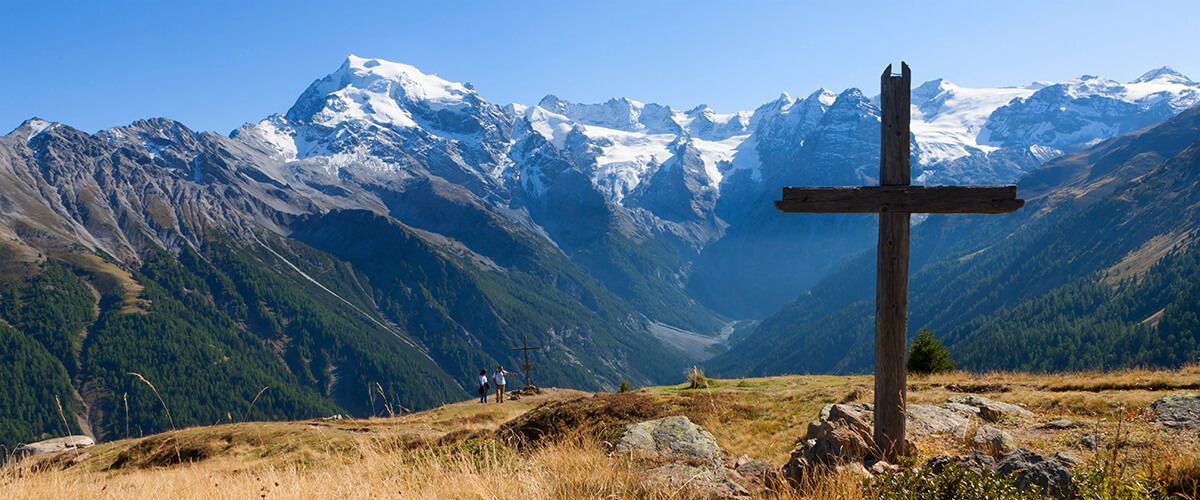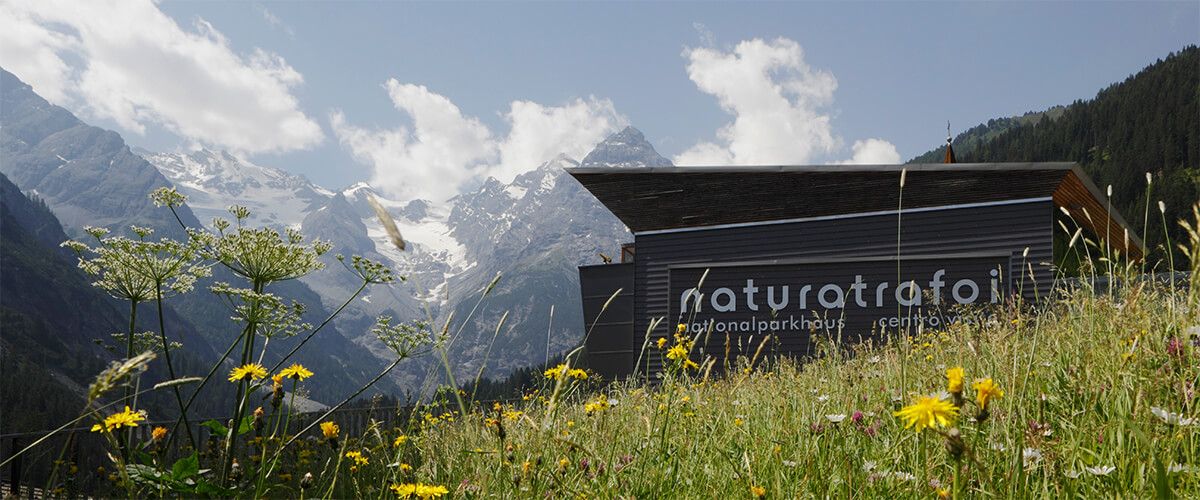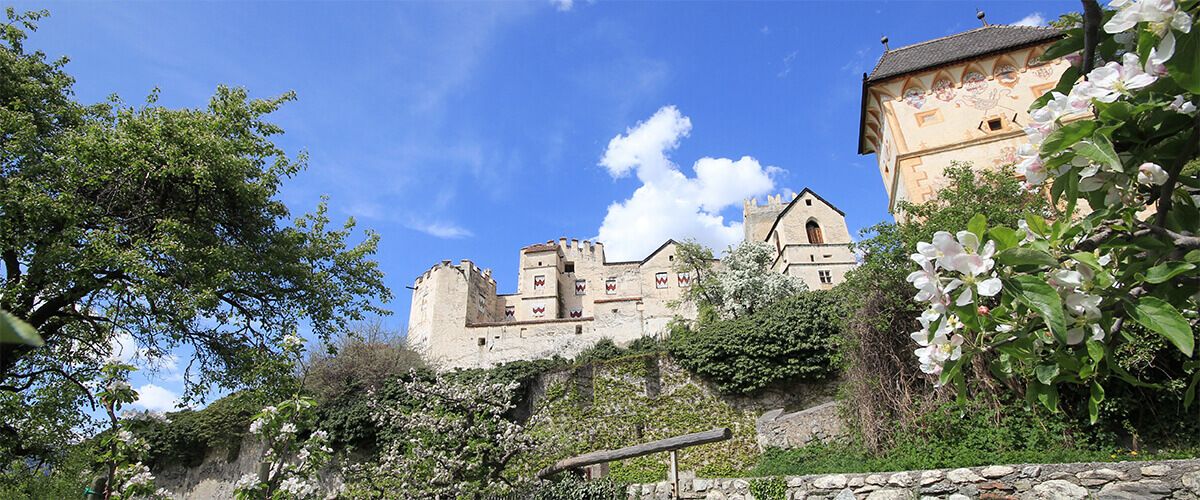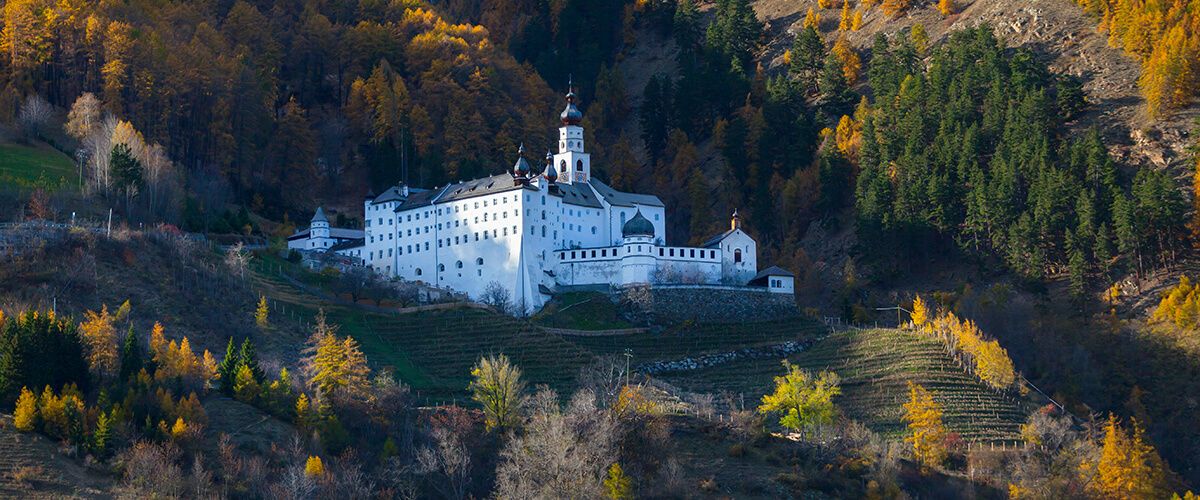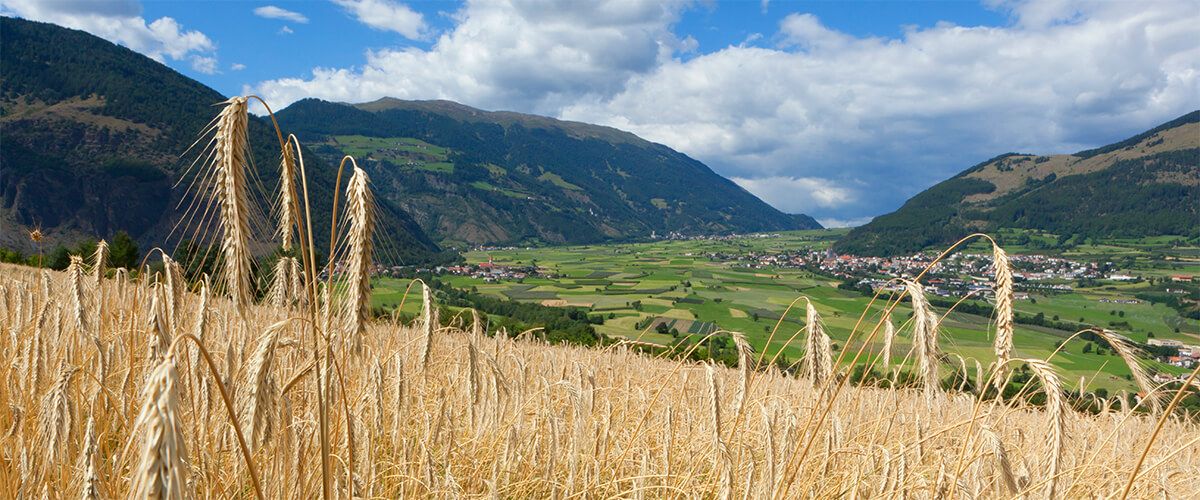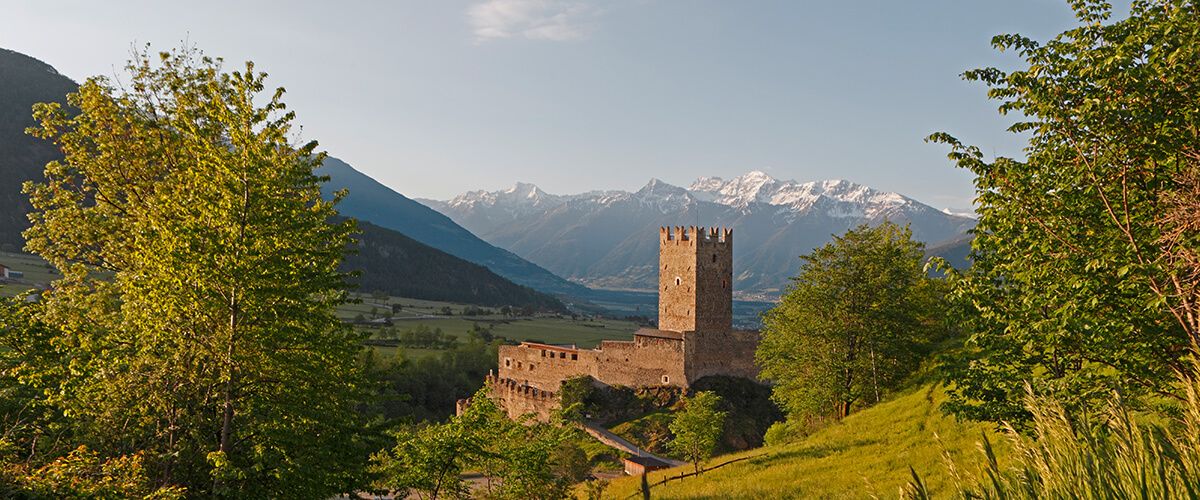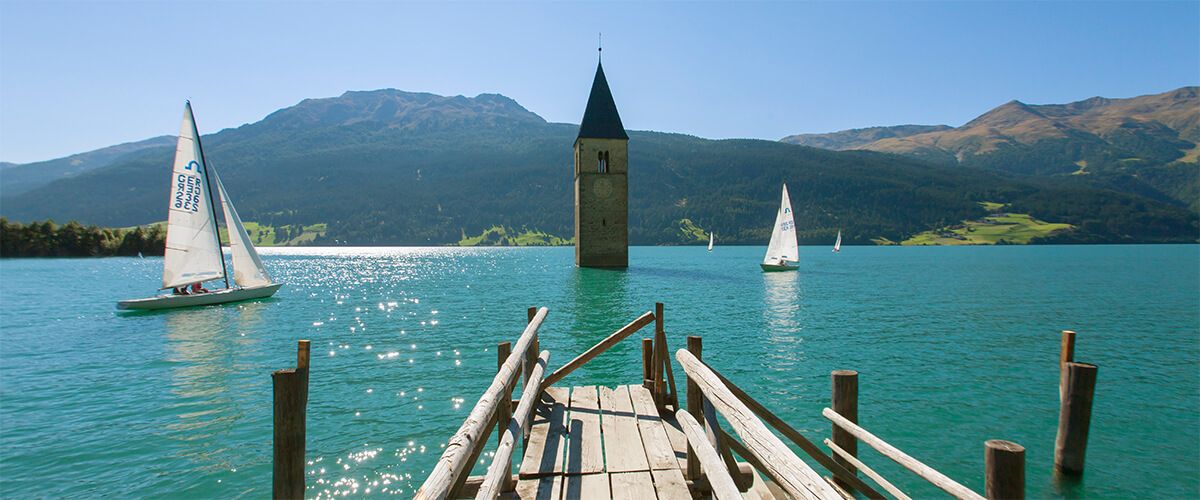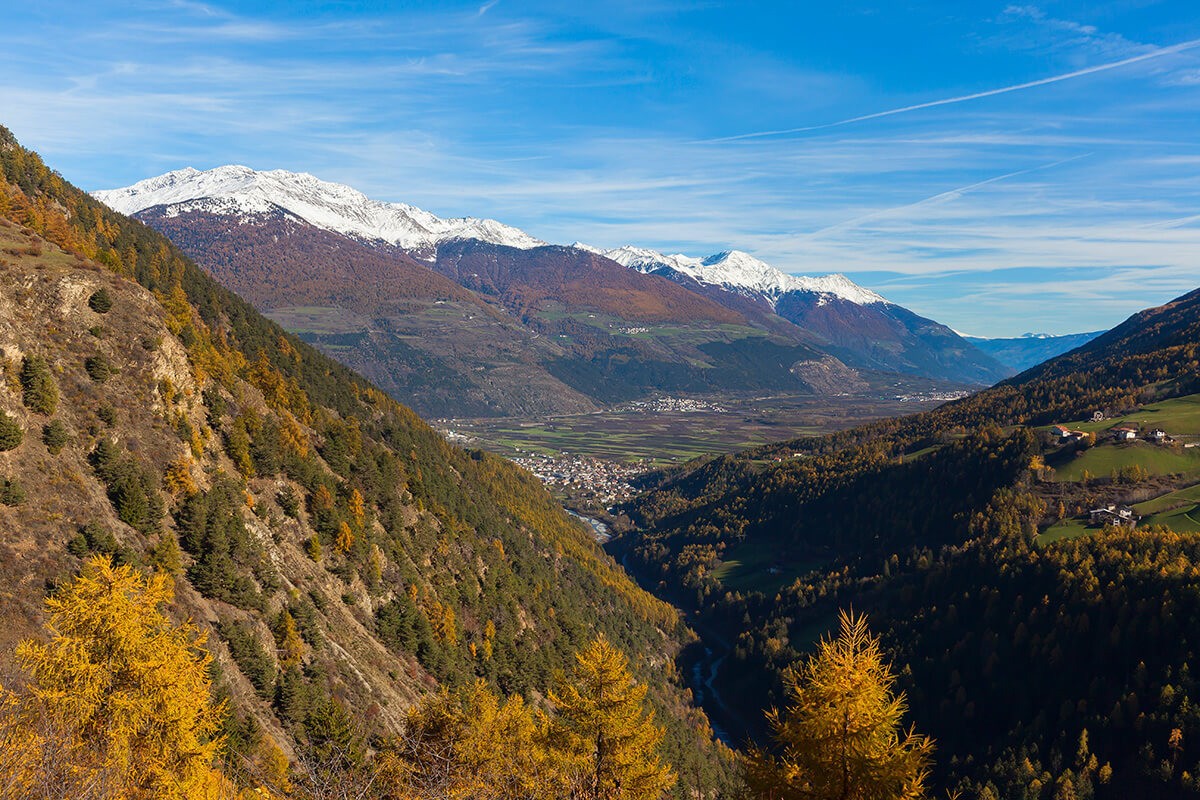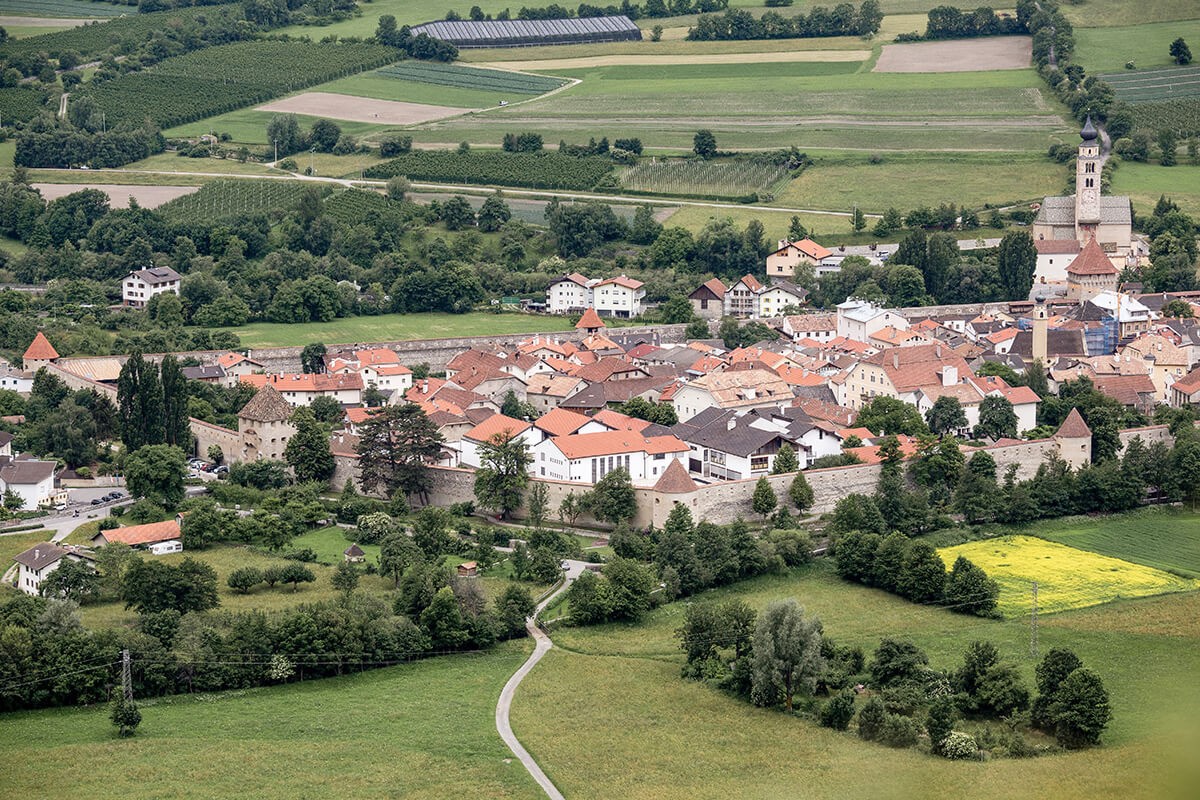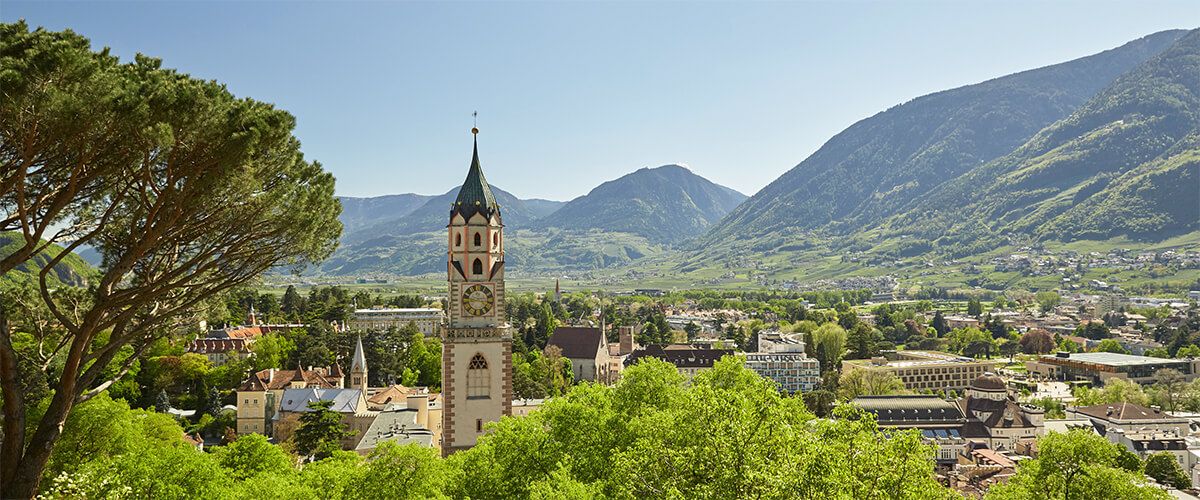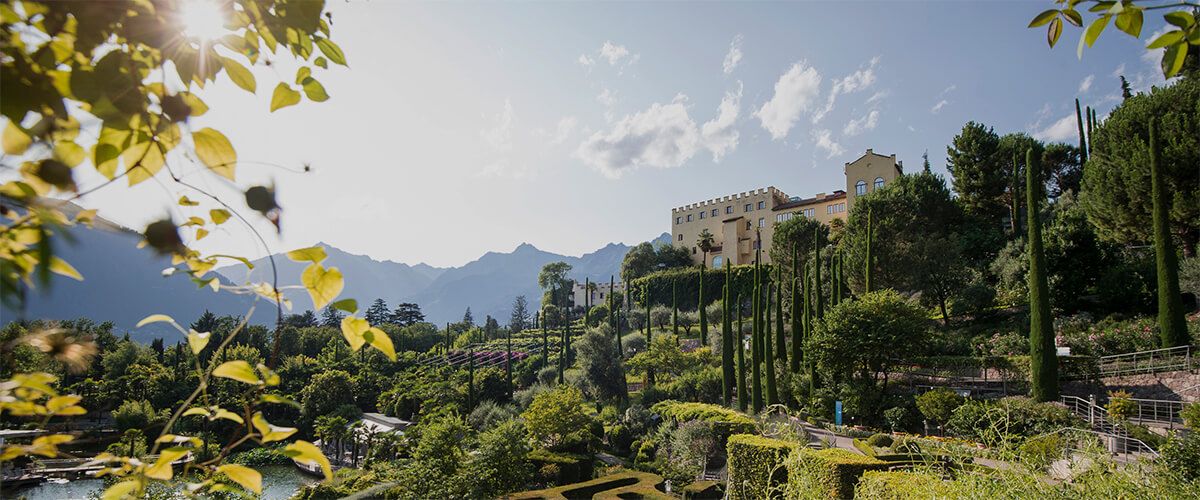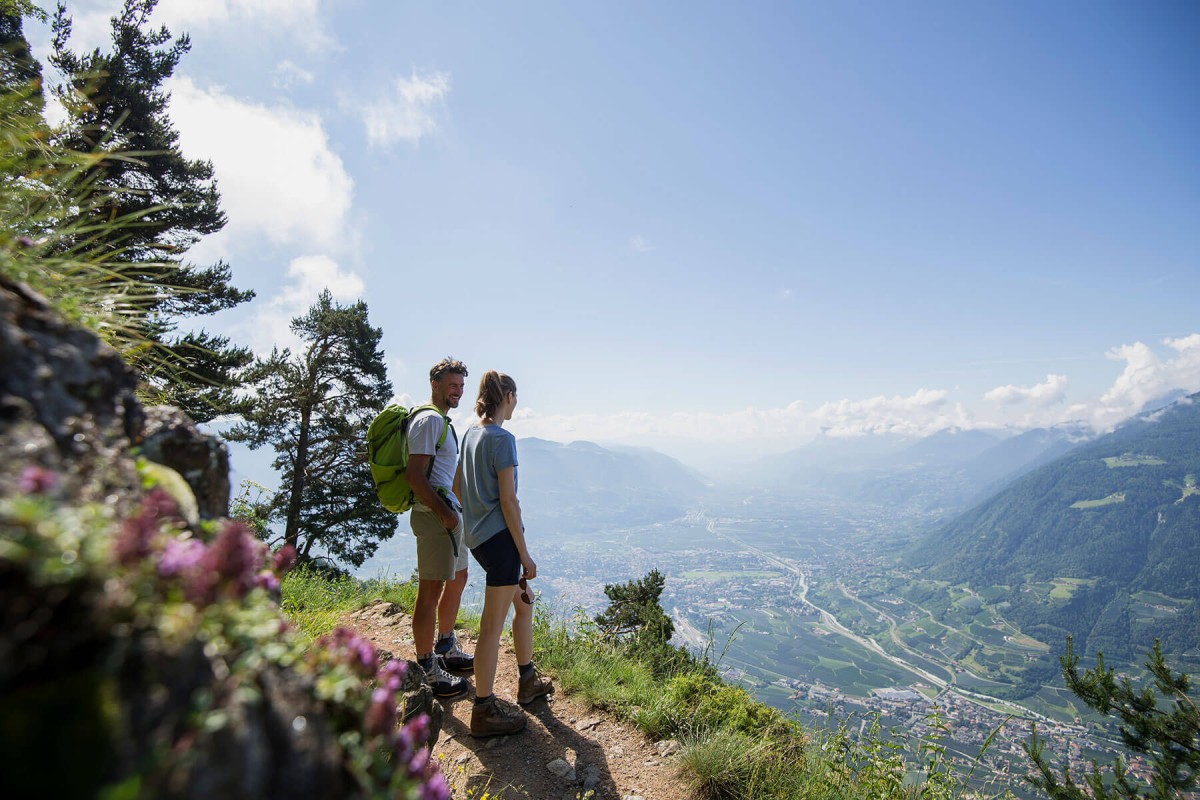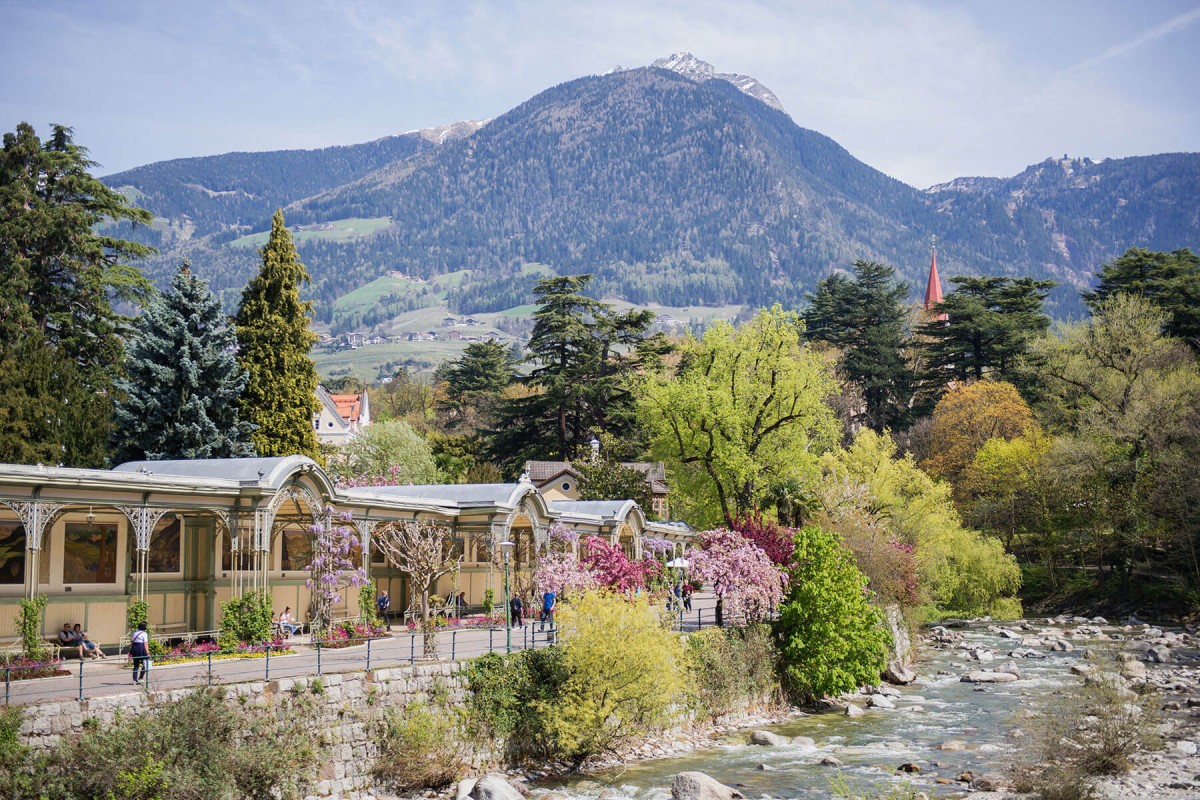Foto Vinschgau
The Vinschgau Valley
The Vinschgau Valley, the cultural region in the west of South Tyrol, starts at the source of the river Etsch at the Reschenpass and goes until Töll, shortly before the spa town of Meran. It is characterised by a relatively wide valley floor with many small side valleys. The steep valley flanks of the Vinschgau belong to several mountain groups with numerous mountains over three thousand metres. Among them "King" Ortler - with his 3905 m the highest summit of the Eastern Alps.
For centuries the Vinschgau Valley was an agricultural region with many mountain farms and a mostly poor population. The valley was originally called the granary of Tyrol. Nowadays many of the former meadows and corn fields are used for the more profitable apple cultivation and the Vinschgau therefore often gets named "the apple garden of Europe".
Thanks to the somewhat backward development up to the 80s, today many testimonies of Romanesque and pre-Romanesque have been preserved. For hundreds of years South Tyrol was part of Austria, so most of the locals still speak german as mother language.
The Venosta Valley is also famous for the discovery of the 5000 year old ice mummy Ötzi.
A contemporary witnesses of the Roman Empire is the ancient Roman trade route Via Claudia Augusta, which leads right through the valley and still exists in pieces. Today it is a highlight for cyclists, who love to cycle the route leading from the Reschenpass to Meran.
Many sights such as the medieval City of Glurns with its completely preserved town wall, the Churburg castle with the largest collection of knight's armour in private ownership or the Marienberg monastery, the highest Benedictine abbey in Europe, can be admired. In addition, the Vinschgau offers many other sights.
Foto Meran und Umgebung
The Spa town of Meran
The Burggrafenamt begins at the south-eastern end of the Vinschgau, with the spa town of Meran as its centre. Meran is the second largest South Tyrolean city after Bozen and has a population of over 40,000. For centuries Meran was the capital of Tyrol. The city can be reached from Prad in three quarters of an hour (50km).
Numerous shops and restaurants invite to a stroll in the arcades of the city. The Mediterranean climate of the city is reflected in the many palm trees along the promenade. The town arranges many beautifully laid out flower beds every year. The 6km long promenade of the Tappeinerweg, with its species-rich planting, offers relaxing hiking opportunities and a wonderful view of the valley basin and the surrounding mountains of the Burggrafentamt.
Popular tourist destinations in Meran and the surrounding area are the Thermal Baths Meran, the botanical gardens of Castle Trauttmansdorff with the Touriseum, Europe's largest horse race course, the Women's Museum, Castle Tyrol - the ancestral castle of the Counts of Tyrol and the City Museum Meran.
Also famous are the Christmas market, the Music Weeks Meran, which take place between the end of August and the end of September, and the Jazz Festival Meran, held in mid-July.
Whether in summer or winter, Meran is worth a visit at any time of the year. Use the VinschgauCard and travel free with the Vinschgau Railway to Meran and back to Prad.
